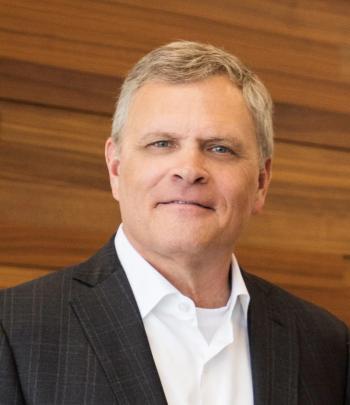
- September 10, 2019 edition
- Volume 96
- Issue 17
How to rev up practice productivity
In some cases even small improvements in revenue and operating efficiencies can make the difference between staying independent and selling or merging a practice,
A recent AMA study found that in 2018, for the first time, employed doctors outnumbered those that owned, or had an ownership stake in, a practice. For independent practices, this milestone highlights the importance of operating as efficiently as possible. That’s because financial difficulties are among the main reasons practice owners cite in giving up their independence by selling or merging their practice.
The good news, according to practice management experts, is that many independent practices can find ways to grow revenue and reduce overhead costs. And while doing so requires planning and sometimes making difficult changes, for practices that want to continue operating independently the effort often pays off.
“In some cases even small improvements in revenues and operating efficiencies can make the difference between staying independent and selling or merging a practice,” says Reed Tinsley, CPA, CFP, a medical practice consultant based in Houston, Texas.
See more patients
Often, the most direct route to bolstering revenue is by seeing more patients. “In this era of declining reimbursements, you’ve got to add patient volume, and you do that by adding appointment slots,” Tinsley says.
Finding ways to see additional patients often is easier said than done, Tinsley acknowledges. Some doctors work more slowly than others, or want to spend more time with patients. Sometimes nurse practitioners and physician assistants balk at the idea of seeing more patients during the day. Still, says Tinsley, “I tell my clients, ‘I don’t care how you do it, it just needs to get done. Even if it’s two a day per provider, over the course of a year that’s going to add some nice revenue to the bottom line.’”
Two common methods for scheduling additional patients are to extend appointment hours and to double-book appointments with the expectation of no-shows. And while the latter technique carries the risk of some patients having to wait longer if there aren’t any no-shows, “it just takes a very good front desk staff to communicate to patients why the doctor is running behind,” Tinsley says.
Another technique is to take a strategic approach to appointment scheduling. Some appointments may be getting more time than they need, says Laurie Morgan, MBA, a partner in the San Francisco-based medical practice consulting firm Capko & Morgan.
“Look at the schedule over the past six months, and see if you can determine whether certain types of appointments that have always been booked for, say, half an hour, are only taking 20 minutes the vast majority of times. You may be able to recapture some time by doing that type of analysis,” she advises.
Along with seeing more patients, Tinsley emphasizes the value of good customer service. “I often say to my clients, ‘are you a referable medical practice?’” he says. “It’s an intangible way to add revenue, by becoming the kind of practice where patients want to come, and refer their friends and family and coworkers to,” he says.
Improving billing and coding
A second way practices can increase revenue is by ensuring they receive all the money they are owed and to which they are entitled-in other words, by being efficient and up-to-date in their billing, coding, and collections.
“Understanding all the codes available to you and using them appropriately and regularly is extremely important because it improves your reimbursement from payers,” says Ripley Hollister, MD, board member and chair of the research committee of the Physicians Foundation and owner of
Dynamic Healthcare Team, a family practice in Colorado Springs, Col.
Dynamic Healthcare recently hired a “patient navigator,” whose responsibilities include tracking and following up with patients so that the practice can bill Medicare’s transitional care and chronic care management codes. In addition, Hollister says, the practice’s coder/biller learned that Medicare has codes for time spent discussing advance directives and living wills during annual wellness visits, so he has started billing for those.
The wellness visits serve another important revenue-related function, Hollister says. Reviewing patients’ records prior to their visits sometimes reveals services for which they are due, or overdue. “This lady isn’t getting her mammograms, that patient needs their pneumonia vaccine, this guy hasn’t had a colonoscopy in 11 years, it all pops up,” he says. “They help keep patients healthy and many of them are services we can bill for.”
Along the same lines, Tinsley encourages clients to put in place a recall system for tracking when patients are due for a needed service and notifying them to come in. He recommends starting by printing out a diagnosis frequency report for the practice’s patients, and identifying which diagnoses require regular visits to manage or treat.
The next step, Tinsley says, is to “data-mine your system for every patient you’ve billed one of those diagnoses to and determine whether they need to come back in. Then bombard them with messages reminding them why they need to come in and to make an appointment.
“It’s low-hanging fruit and it’s just crazy to let it sit there without taking advantage of the revenue opportunity,” Tinsley says.
Billing and collecting from patients are other areas where practices often can find more revenue with little or no additional investment. For example, Tinsley recommends keeping patients’ credit card numbers on file to ensure that copays and self-pays are collected promptly.
“Think about the time and money you waste when a bill ends up in the receivables process. It’s a total waste,” he says.
Some practices, he adds, go as far as requiring non-emergent patients to reschedule if they can’t pay what they owe the day of their appointment.
Technology can help
Morgan urges her clients to bill and collect electronically, via a patient portal. “From my perspective, the biggest thing practices can do is to enable patients to receive their statements and pay online,” she says, since that’s how people increasingly are accustomed to-and usually prefer-paying bills. Moreover, having to mail a statement to the patient and wait for the patient to mail payment slows the revenue cycle.
“Automating those processes is a real win-win because the practice gets paid faster and at lower cost, and the patient is happier,” she says. “We’ve worked with practices where they’ve turned on the payment portal and that night they started getting new payments from patients. It’s a really nice thing to come in in the morning and see that you got money while you were sleeping.”
Effective portal use can also help bolster revenue in less direct ways, by enabling providers and staff members to use their time more efficiently, says Margo Williams, MHA, CMPE, senior associate for practice management at the American College of Physicians.
Practices that encourage patients to use the portal generally see a reduction in phone calls, she says, and spend less time playing phone tag with patients. Also, many of the queries that come via the portal are routine and can be handled by someone other than a physician. “If someone just wants to know their lab results, as long as they’re normal, a nurse can usually respond,” she says.
“The overarching thing to remember is that practice efficiency isn’t rocket science,” she adds. “It’s just a constant process of looking at each step and asking, ‘what can we do to make it better? What can we do to address snags in the system?’”
The staffing question
Turning to the expense side of the equation, the biggest overhead costs most practices incur are in staffing, and here an easy target for savings is overtime pay. The first step in eliminating or reducing overtime is determining why it’s occurring, says Morgan, since that might suggest the solution.
“If it turns out that an entire section of your staff is constantly working overtime, it may not take long before it’s no more costly, and far more efficient, to bring in another body,” she says.
Tinsley agrees. “I think any overtime is a problem,” he says. “It means either you’ve got inefficient employees or not enough employees or a combination of the two.”
Sometimes, investigating overtime can surface an entirely different problem: fraud. Tinsley cites the example of an employee at a client practice who regularly claimed overtime for working over her lunch hour, even though she wasn’t doing any work. When confronted, the employee said she was making up for a raise that had been smaller than she expected. “In the scheme of things it wasn’t that much money, but even small amounts can make a difference,” he notes.
Along with seeking to eliminate overtime, Tinsley advises practices to ensure they really need every employee they have. To do this, he asks them to develop an organizational chart. After spending some time observing the practice’s operations and workflow, he meets with the administrator.
“I’ll take the organizational chart and put an ‘x’ through someone’s name and say, ‘tell me why you need this person? Can their job be absorbed by someone else?’” he says.
Similarly, he suggests that practices require employees to take vacations lasting at least five days, and assign the vacationing employee’s duties to others. “If those people can handle the extra duties with no problem, doesn’t that tell you the person or position may not be needed?”
Purchasing options
Another area practices can look for savings is in practice-related equipment and services. Here there are no shortcuts; instead, it’s a matter of monitoring expenses and looking for ways to trim them without harming productivity, experts say.
A good place to start is with physician societies, some of which offer savings to their members. For example, the American Osteopathic Association provides discounts on medical and office supplies, as well as vaccines, through its group purchasing organization, AOA Purchase Power.
“Vaccines are a significant upfront expense for physicians in private practice” says Matthew Kremke, vice president of the American Osteopathic Information Association. “In busy practices, it isn’t uncommon for our members to incur out-of-pocket costs of $10,000 a month or more.”
Outsourcing vaccine-related services can be another way to reduce their costs, according to Ripley. VaxCare, the company his practice uses, handles all vaccine billing and manages the practice’s inventory. “They know what we have on hand at any given time and send the stuff they know we need. And if it goes out of date, they take it back,” he says.
Ripley recommends that practices regularly shop around for lower prices on services such as telephone and internet, as well as office supplies and equipment. For the latter, he suggests wholesale clubs such as Costco and Sam’s Club. “I’m not above dropping by Sam’s to pick up some c-fold towels or whatever,” he says.
“If it’s something that you absolutely need, then of course you have to make sure you get it,” says Morgan. “But if you can get it at a lower cost then that’s always a good idea.”
Articles in this issue
over 6 years ago
What the internet of medical things means to your practiceover 6 years ago
Coding for revenueover 6 years ago
Dealing with the shortage of rural physiciansNewsletter
Stay informed and empowered with Medical Economics enewsletter, delivering expert insights, financial strategies, practice management tips and technology trends — tailored for today’s physicians.
















